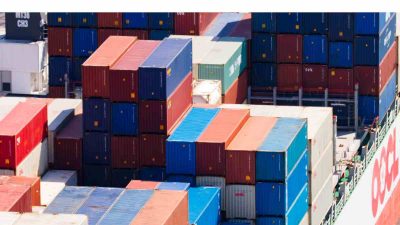It’s been two weeks since the deadly Francis Scott Key Bridge in Baltimore in the US collapsed when a cargo vessel, Dali, crashed into it. The bodies of three construction workers who filled potholes on the bridge during the collision have been found, while three more are still unaccounted for.
A memorial site has been erected close to the scene for 38-year-old Maynor Suazo-Sandoval, his 35-year-old colleague Alejandro Fuentes, and 26-year-old Dorlian Cabrera.
Rescue crews are now removing the containers from the wrecked ship. This signals a significant moment to enable the channel to reopen for the country’s main shipping lanes.
Parts of the bridge, tangled up across the ship, are also being removed.
Channel will reopen in May
On the weekend, US President Joe Biden visited the scene where the metal mass still remained in the water. He also met with the families of those who died.
Biden promised the logistics sector that the government’s priority is to “open the port” as it’s the largest shipping hub for import and export.
Rescue teams are still chasing the deadlines set out by Biden to open some parts of a third channel for commercial traffic and car carriers by the end of April. The entire channel must be open for traffic by May.
Difficult task to untangle metal
The twisted metal above and below water covering the crashed boat Dali is “extremely difficult” to remove, US Army Corps of Engineers told the media.
It’s been difficult to untangle the twisted metal above the water and below. The collision site at the bridge in the Patapsco River near Baltimore is a buzz with rescue workers. Col. Estee Pinchasin says, “What we see is a massive, cantilevered, mangled mess of wreckage. It’s contorted and extremely difficult to identify structural integrity.”
Not only is it extremely difficult, but local government officials have also acknowledged that it’s a dangerous working condition.
While many are chasing the deadlines outlined by Biden, they can only move as fast as the weather allows them.
Investigations continue
Authorities are still investigating what may have caused the crash. Preliminary probes have indicated that the crew issued a mayday. According to CBC, this enabled authorities to close the bridge traffic. This was to avoid “huge sections of the bridge collapse into the river.”
New York Times reports that the vessel’s lights went down seconds before the Baltimore bridge collision. It appears the engine halted, and even the rudder was frozen. This is used to maneuver the ship.
Two weeks later, there are still no clear answers about what may have led to the crash. Engineers and shipping officials are all waiting to unpuzzle the mystery.
It begs whether there is a need to upgrade infrastructure in the logistics sector. As the NYT puts it, this crisis happened in an era where the industry’s largest ships can carry huge piles of cargo, four times more than a few decades ago. Yet it still has to navigate through congested urban ports under bridges that may carry thousands of people a day.
Share this article
About the author
Mia is a multi-award-winning journalist. She has more than 14 years of experience in mainstream media. She's covered many historic moments that happened in Africa and internationally. She has a strong focus on human interest stories, to bring her readers and viewers closer to the topics at hand.














